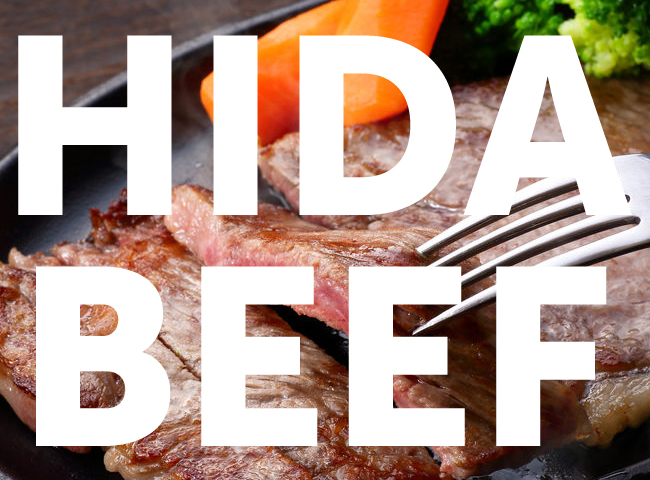The Essential Guide to Japanese Grills & Grilled Food


Grilling over an open flame is one of the oldest cooking techniques known to humankind, and this is just as true in Japan as in the western world. Traditionally, the Japanese home was centered around a family hearth in the main room of the house where people assembled and used the open fire for warmth and light, for chores such as drying wet clothing, and of course for cooking. From around 2,000 years ago, wood-based charcoal became the most common household fuel used in Japan, and this lasted until the 1950s. This charcoal-based grilling led to a variety of dishes and cooking techniques that are still popular today in Japan.
Read on to learn all about Japanese grilled foods and grilling techniques.
Types of Japanese Grills: Hibachi, Teppan & More
Over the centuries, Japan has invented a number of grills to use in various situations and settings when cooking grilled foods. For the very best grilling, binchotan charcoal is used. Binchotan became popular during the Edo period. It’s made from the wood of the native Japanese ubame oak tree that is processed into white charcoal. Binchotan is harder than black charcoal and burns cleanly, giving off no odor, and it cooks food at a lower temperature than other types of charcoal making the outside of meat crispy without drying it out.
Hibachi
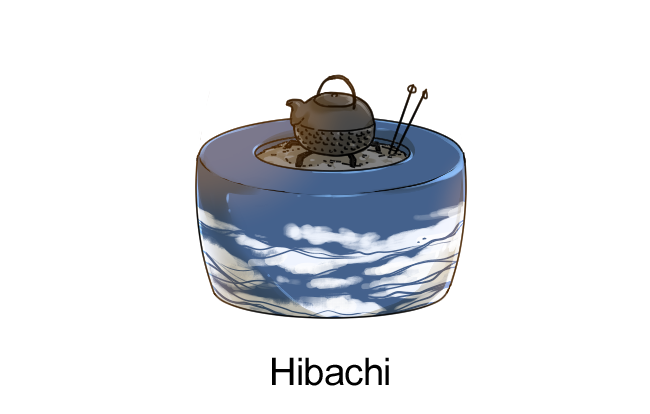
A hibachi is a small heater that consists of a container made from porcelain or other fireproof materials. While traditional hibachi were mostly used for heating rooms rather than for cooking, the name “hibachi” was co-opted to market traditional tabletop barbecue grills overseas. As a result, the term “hibachi” is often used outside of Japan to refer to any small Japanese charcoal grill or for grilled Japanese cuisine in general. Hibachi come in the traditional round porcelain form, as well as a rectangular shape made from cast iron, stainless steel or aluminium.
Shichirin

A shichirin is a type of small portable charcoal grill or stove that uses binchotan charcoal. Because of its small size, shichirin braziers are best when cooking for about 2 to 3 people and can only be used for a few hours at a time. Traditional shichirin braziers were made from ceramics but modern ones may be made from a mixture of materials.
Konro
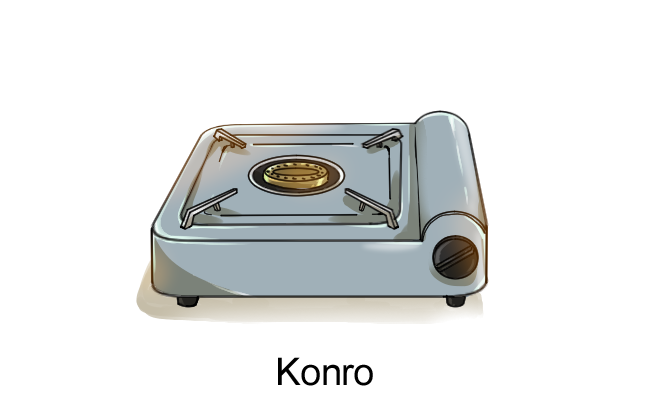
A konro is a popular type of Japanese grill that is compact in design, typically box-shaped, and may be lined with ceramic or aluminium. They can be used for cooking with binchotan charcoal, though gas-fueled barbecue types have become extremely popular in recent years. Konro typically have a narrow design so that skewered foods can be placed atop the grill without falling in.
Irori
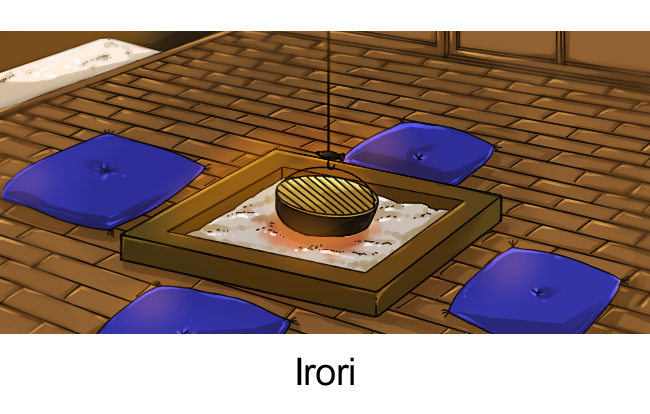
An irori is a traditional Japanese open hearth. The very earliest irori hearths were dug into the dirt floor of homes, but once homes were built with raised floors the central hearth was built into the wooden floor of the house. The irori hearth is filled with sand and ashes to protect the wood of the house from the burning charcoal, and food is cooked in this sand pit or in a kettle suspended on a hook over the irori hearth. These days, irori are rare to find in modern Japanese homes, but you may see one in a traditional restaurant or izakaya.
Teppan
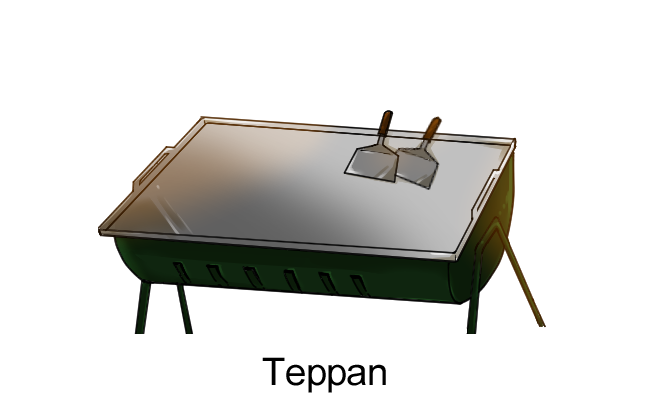
A teppan is a type of open iron cooktop, which become popular in Japan following the introduction of modern iron manufacturing. It’s used to grill meat, seafood, and vegetables and also to make dishes like okonomiyaki, a savory mixed pancake of springy dough combined with shredded cabbage, fried pork, and other ingredients.
Types of Japanese Grilled Food
There are many different types of Japanese cuisine that can be prepared over these traditional grills.
Teppanyaki
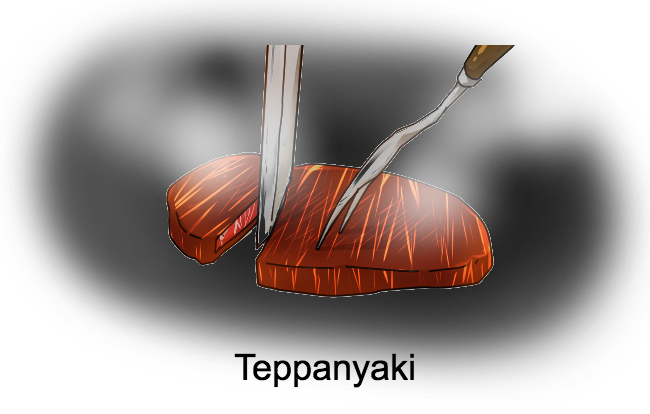
As the name implies, teppanyaki refers to teppan-style cooking, featuring meat and vegetables grilled on an open-iron cooktop. Teppanyaki was invented in the post-war era as the Japanese take on an American-style steakhouse. Over time has evolved into a dinner theater type of experience, with skillful chefs manipulating the ingredients on the grill with flair and pizazz. Outside of Japan, some people may refer to teppanyaki cooking as “hibachi” dining.
Yakitori/ Yakiton

Yakitori and yakiton are two popular types of Japanese grilled food. Yakitori refers to grilled chicken meat, with various parts of the chicken grilled over charcoal until it’s crispy on the outside and juicy and tender on the inside. Yakiton refers to the same style of cooking, but for pork. Both styles of cooking aim to use every part of the animal, so it’s not unusual to see items like chicken hearts and pork intestines on the menu.
Yakiniku

Yakiniku is the Japanese equivalent of barbecue, with bite-sized slices of juicy beef and pork grilled tableside over a charcoal flame. Japanese yakiniku originated from Korean-style barbecue, but has since become its own entity with different kinds of marinades and dipping sauces.
Sakana no Shioyaki

Sakana no shioyaki refers to any fish that is seasoned with salt and grilled over charcoal. This style of cooking can be used for most any kind of fish. Popular fish include ayu (sweetfish) in the summer, which is skewered to look like a fish swimming upstream and grilled over coals, as well as saba (mackerel), an oily silver-skinned fish that’s high in omega-3 fatty acids.
Robatayaki
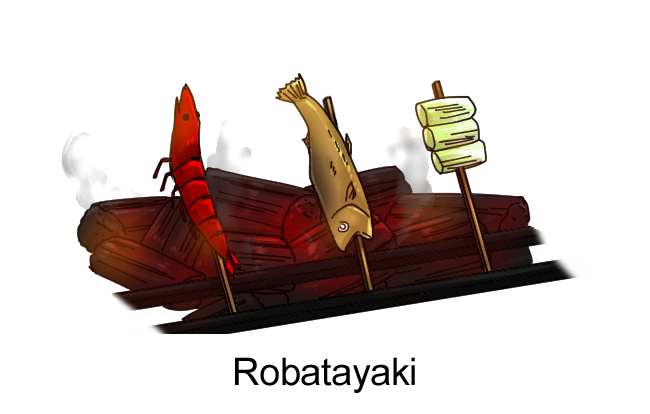
Robatayaki, sometimes shortened to just “robata”, is a rustic style of cooking around an irori hearth that originated in Hokkaido, the northernmost prefecture of Japan. Traditionally, Hokkaido fishermen would keep charcoal in a box for warmth and at the end of the day the coals would still be warm enough to grill some of the day’s catch. Robata restaurants feature a large irori hearth or central grill at which the chef cooks, with seats arranged around it. The raw food is laid out around the cooking station for diners to point at what they’d like to order, and the grilled food is served up on a wooden oar in tribute to the cuisine’s fisherman origins.
Kabayaki

Kabayaki is a popular way to cook fish and eel, and a type of Japanese grilled food taht dates back to the Edo period. First, the fish or eel is boned and butterflied; then, the fillets are marinated in a sweet soy-based sauce; finally, the fillets are skewered and cooked over coals until tender and crispy, and served either whole or cut, on top of or alongside steamed rice.
Enjoy the Deep Flavors of Japanese Grilled Foods—or Buy a Japanese Grill and Try Cooking Them at Home!
You simply haven’t had an authentic Japanese dining experience until you’ve tried some of the delicious grilled foods that the country has to offer. From skewered foods like yakitori and yakiton to traditional robatayaki, there’s a wide variety of mouth-watering grilled cuisines to explore. Itadakimasu!





